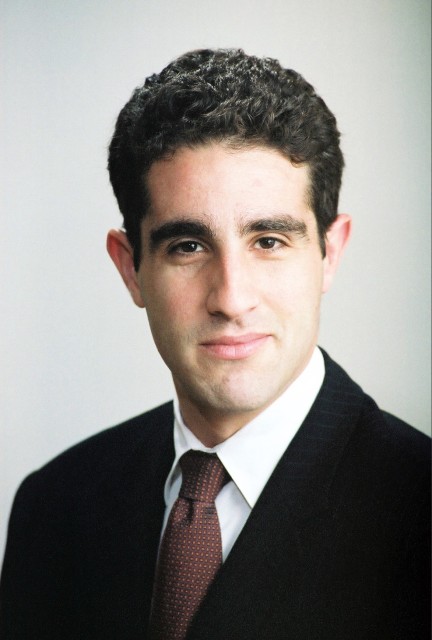The idea that national defense against nuclear terrorism should be re-thought based on terrorist capabilities and motivation to carry out an attack was the focus of a talk by Michael Levi on Wednesday.
Levi, a fellow for science and technology at the Council on Foreign Relations, spoke on “Defeating the Five Foot Tall Nuclear Terrorist” to a full-house audience in the Physics Building Auditorium at Technical Area 3. The talk is part of the Nuclear Nonproliferation (N) Division's seminar series.
At the unclassified talk, Levi discussed his ongoing study on nuclear terrorism, which highlighted the difficulties for terrorists to carry out a nuclear attack and strategies to help thwart future attempts.
Levi placed a strong emphasis on how current policy planners develop strategies to meet the worse-case scenario of nuclear terrorism, and that they are searching for a perfect defense to stop “ten feet tall terrorists.”
The main defense tool, he said, is to keep volatile material that could be used to make a nuclear weapon under control and out of reach of terrorists. Levi believes this is not the only effective strategy, and that through a different analysis process of terrorists’ abilities, other solutions and strategies should be developed.
Levi used his comparison of “ten feet tall” to “five feet tall” terrorists to show the difficulty in pulling off a nuclear terrorist incident and how worse-case scenario planning is not always the most effective way to meet the problem of deterrence and prevention of an attack.
In his comparison he noted that the “ten feet tall terrorists” are highly adaptable and innovative, are risk accepting, have strong financial resources and the ability to mobilize those funds, are well connected and are immune to Murphy’s Law of unpredictability.
“Five feet tall” terrorists on the other hand are relatively rigid and uncreative in planning attacks. He used the Sept. 11, 2001 attacks as an example, describing the attack as fairly innovative. But, he said the flight training received and how the terrorists came into the country was very unoriginal and conventional.
Levi continued by noting that many terrorists are actually risk-averse due to religious implications of failure. This is compounded by the thought of the overall net benefit of an attack if there is an expected reprisal. These “five feet tall” terrorists, he said, also are financially challenged and inconsistently connected similar to the Al-Qaida cells that are responsible for fundraising themselves.
“Nuclear terrorism is hard. Even if they are able to get a hold of the material necessary, it is still very difficult to pull off an attack,” said Levi. “Even with the design, having the engineering capabilities to put together a device is a huge barrier.”
Levi also discussed the difficulty terrorists face obtaining the nuclear material necessary to create a weapon without being detected. Levi used five different types of materials that conventional “five feet tall” terrorists could use to build a weapon. Every type had a long list of possible drawbacks and a high percentage of detection, which Levi said makes risk-averse terrorists think twice about attempting a nuclear plot.
While the strongest tool for defense is security at the source of the nuclear materials, Levi concluded that better attribution and detection technology for deterrence of government backed terrorist plots would significantly lower the threat of nuclear terrorism. That, coupled with emergency management exercises and consequence management plans with a broader scope would improve overall homeland security and make it easier to address the needs of local law enforcement.
Levi is co-author of "The Future of Arms Control" and of "Untapped Potential: U.S. Science and Technology Cooperation with the Islamic World." His most recent publication is "U.S.-India Nuclear Cooperation: A Strategy for Moving Forward," which he wrote with Charles D. Ferguson, also of the Council on Foreign Relations.
Before joining the Council on Foreign Relations as a fellow for science and technology, Levi worked as a science and technology fellow in foreign policy studies at the Brookings Institution.

